Rome: Exploring Ancient Wonders in a Journey Through Time
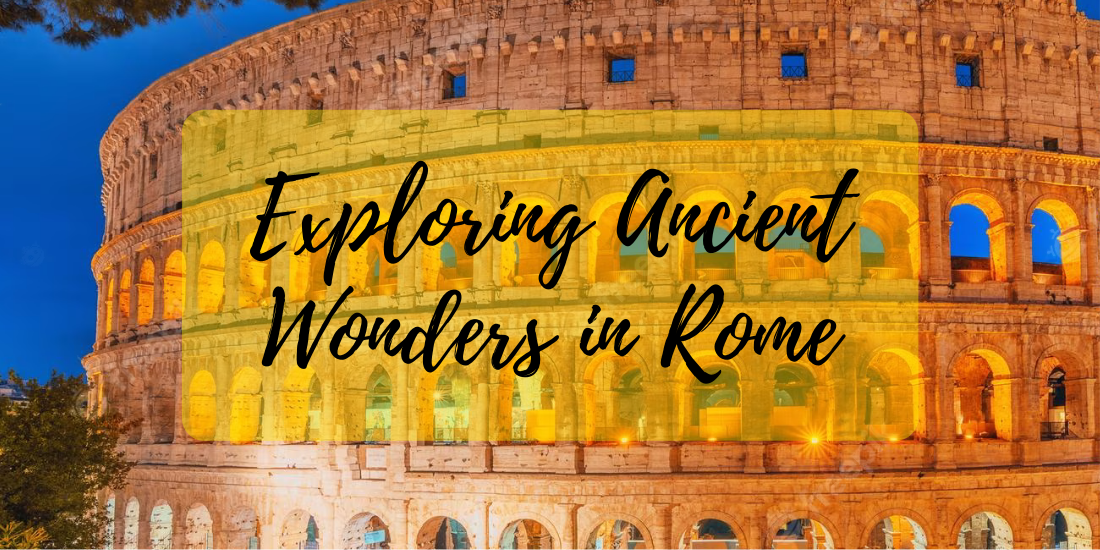
A trip to the Capital wouldn’t be complete without seeing the top 10 wonders and attractions.
Rome, known as the Eternal City, is not only the birthplace of Western civilization but also the spiritual heart of Christianity. This enchanting metropolis is a veritable treasure trove of art, history, and architecture, akin to an open-air museum where every gaze unveils the footprints of history and culture spanning millennia. Rome’s essence remains eternally contemporary, forever pushing towards the future.
The city’s profound history seeps through every nook and cranny, offering an inexhaustible wealth of marvels you absolutely must explore without hesitation. Immerse yourself in Rome’s myriad attractions through a novel, intelligent, and convenient approach that eliminates concerns about lengthy queues and transportation hassles. Here, you will find all the essential information for navigating Rome intelligently. Now, let’s delve into the top 10 wonders to behold in Rome.
The Colosseum
The Colosseum, situated at the heart of Rome, Italy, is an elliptical amphitheater of remarkable historical significance. It is the most massive amphitheater ever erected within the Roman Empire and remains the world’s largest standing amphitheater to this day. Its construction commenced in 72 A.D. under the reign of Emperor Vespasian and reached completion in 80 A.D. during the rule of his successor, Titus.
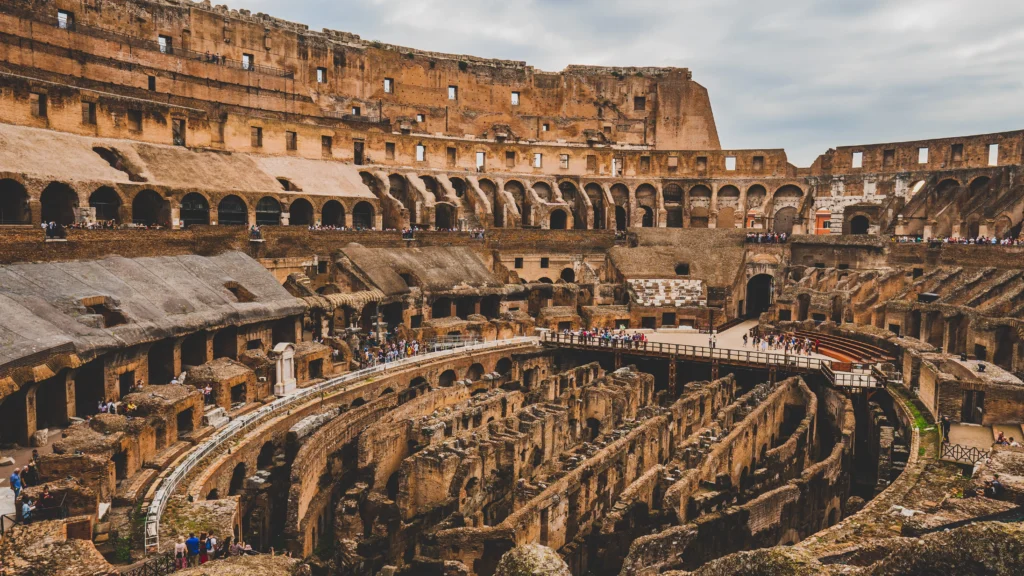
With a seating capacity estimated to accommodate 50,000 to 80,000 spectators, the Colosseum served as a venue for various events, including gladiatorial combat, public exhibitions, and executions. The Colosseum, the Flavian Amphitheatre, is arguably Rome’s most iconic ancient wonder. This massive arena once hosted epic gladiator battles and grand performances. Its grandeur and scale are breathtaking. Furthermore, It serves as evidence of the incredible engineering accomplishments of ancient Rome. It is a must-see for anyone visiting the city.
The Pantheon
In the heart of Rome’s historical center, the Pantheon is a temple devoted to all past, present, or future deities. It stands as one of the finest-preserved examples of Roman architectural excellence. This remarkable structure was initially constructed in 27 B.C. under the direction of Marcus Agrippa, an associate of the first emperor, as a gesture of reverence to the seven planetary gods.
Consequently, it acquired its name, “Pantheon,” derived from the Greek term meaning “Of all the Gods.” Between 118 and 125 A.D., Emperor Hadrian oversaw its reconstruction. He reoriented the temple 180 degrees and created an expansive porticoed square before the new structure.

Locally, it became known as “Rotonna,” or the “Round,” giving its name to the adjacent square and street. After being closed and neglected during the early Christian era and later suffering pillaging by invaders, the Pantheon was bestowed to Pope Boniface IV by the Byzantine Emperor Phocas in 609 A.D. Pope Boniface IV sanctified the temple, offering its dedication to Santa Maria and Martyres. Inside, you will find the resting places of Italy’s first two kings, Victor Emmanuel II and his son Umberto I. Consequently, it was selected as one of the most significant sanctuaries associated with the House of Savoy.
The Pyramid of Cestius
Rome’s Pyramid of Cestius may seem out of place in the Eternal City, but it is a remarkable ancient wonder nonetheless. Built around 12 B.C., this pyramid was a tomb for a wealthy Roman. Its unusual design is a testament to Rome’s fascination with Egyptian culture during that period.

Visiting these ancient wonders in Rome is like stepping back in time. Each tells a unique story of Rome’s glorious past and enduring influence on art, architecture, and culture. If you plan a trip to Rome, include these remarkable sites. They offer a glimpse into history and a sense of wonder that’s truly timeless.
The Arch of Constantine – Rome
The Arch of Constantine is another triumphal arch celebrating Emperor Constantine’s victory. It blends various architectural styles, incorporating sculptures and reliefs from earlier monuments, making it a fascinating piece of Roman history. The arch is made of white marble and grey granite and is decorated with reliefs depicting Constantine’s victory over Maxentius.
The reliefs are a mix of new and reused sculptures from earlier monuments. This reflects the political and religious changes that were taking place in the Roman Empire at the time. Constantine became the initial Roman emperor to embrace Christianity, and the arch can be seen as a symbol of the transition from paganism to Christianity.
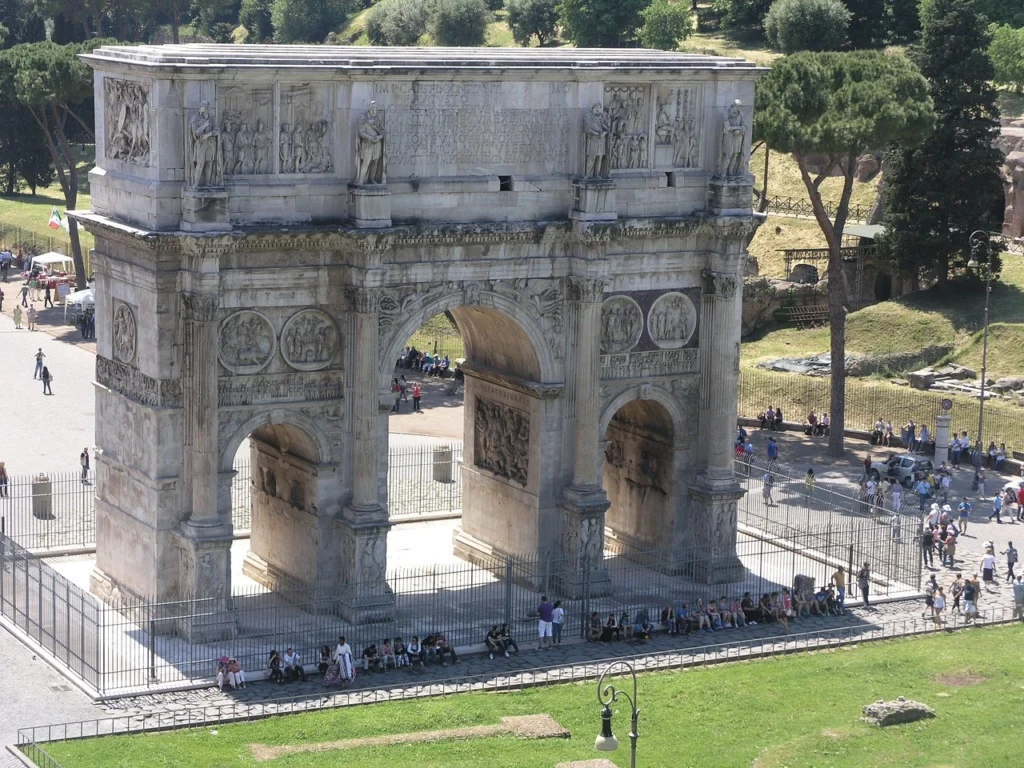
The Arch of Constantine is a UNESCO World Heritage Site, one of Rome’s most popular tourist attractions. It is a reminder of the glory of the Roman Empire and the changing religious landscape of the time.
Here are some of the interesting facts about the Arch of Constantine:
- It is the last triumphal arch built in Rome.
- It is the largest Roman triumphal arch.
- The reliefs on the arch are a mix of new and reused sculptures from earlier monuments.
- The arch can be seen as a symbol of the transition from paganism to Christianity.
- The Arch of Constantine is a UNESCO World Heritage Site.
The Trajan’s Column – Rome
Trajan’s Column, situated in Rome, Italy, is a triumphal monument erected to commemorate the victory of Roman Emperor Trajan in the Dacian Wars. This impressive structure was constructed under the guidance of the architect Apollodorus of Damascus at the behest of the Roman Senate. Positioned within Trajan’s Forum, north of the Roman Forum, this freestanding column was completed in AD 113.
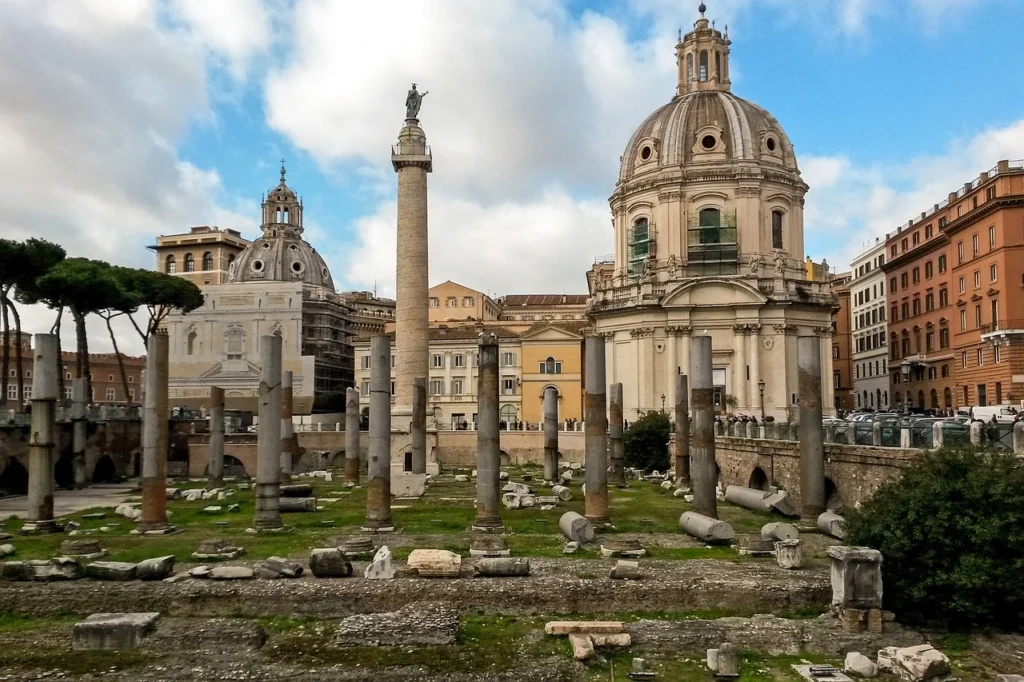
Its most renowned feature is its spiral bas-relief, vividly portraying the conflicts between the Romans and the Dacians during the 101-102 and 105-106 years. Its innovative design has inspired numerous victory columns in ancient times and more recent history. Trajan’s Column is a masterpiece of Roman art and architecture. It is a powerful and moving tribute to Trajan’s victory and a valuable historical document. It is one of Rome’s most frequented tourist destinations and is a must-visit for those interested in Roman history and art.
Here are some interesting facts about Trajan’s Column:
- It is the most giant freestanding Column in Rome.
- It is made of marble from Carrara, Italy.
- The spiral relief is 230 feet (70 meters) long and contains 2,500 figures.
- The relief depicts the events of the Dacian Wars in chronological order.
- The Column was initially topped with a statue of Trajan, but a statue of St. Peter replaced this in the 16th century.
- Trajan’s Column is a UNESCO World Heritage Site.
The Circus Maximus
The Circus Maximus was the largest chariot-racing stadium in ancient Rome. It was located between the Aventine and Palatine hills and could accommodate over 150,000 spectators. It was first built in the 6th century B.C. and was expanded and rebuilt several times over the centuries. The last major renovation was completed in the 4th century A.D.
The Circus Maximus fell into disrepair in the Middle Ages and was eventually abandoned. In the 19th century, it was excavated and partially restored. Today, it is a public park and is still a popular tourist destination.
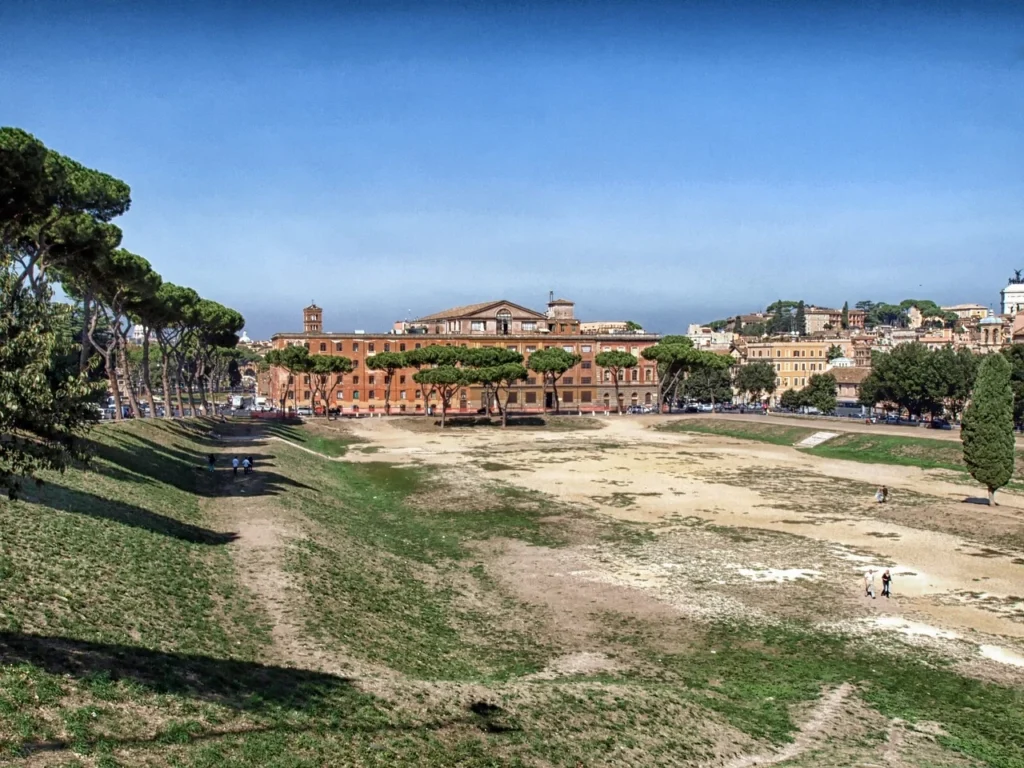
Here are some interesting facts about the Circus Maximus:
- It was the largest stadium in the world for over 1,000 years.
- It could accommodate over 150,000 spectators.
- It was used for chariot races, gladiatorial contests, and animal hunts.
- It was a major center of entertainment and social life in ancient Rome.
- It fell into disrepair in the Middle Ages and was abandoned.
- It was excavated and partially restored in the 19th century.
- Today, it is a public park and a popular tourist destination.
The Baths of Caracalla
The Baths of Caracalla (Italian: Terme di Caracalla) were public baths in ancient Rome, Constructed between 212 and 216 AD in the era of Emperor Caracalla. They were Rome’s largest and most luxurious baths and could accommodate up to 1,600 bathers. The baths were decorated with marble, mosaics, and statues. They were also home to a library, a lecture hall, and a gymnasium.
The baths were a popular place for Romans to relax, socialize, and exercise. They were also used for religious ceremonies and political gatherings. The Baths of Caracalla fell into disrepair in the Middle Ages and were eventually abandoned. In the 16th century, they were used as a quarry for building materials. In the 19th century, they were excavated and partially restored. Today, they are a popular tourist destination.
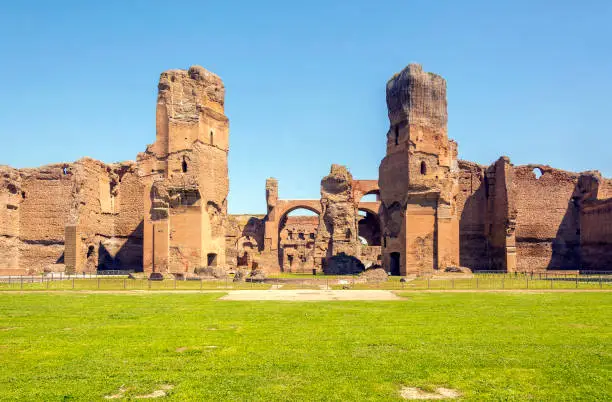
Here are some interesting facts about the Baths of Caracalla:
- They were the largest and most luxurious baths in Rome.
- They could accommodate up to 1,600 bathers.
- They were located on Rome’s outskirts and surrounded by gardens and colonnades.
- They were divided into two main sections: the frigidarium (cold room) and the caldarium (hot room).
- The baths were decorated with marble, mosaics, and statues.
- They were also home to a library, a lecture hall, and a gymnasium.
- The baths were a popular place for Romans to relax, socialize, and exercise.
- They were also used for religious ceremonies and political gatherings.
- The baths fell into disrepair in the Middle Ages and were eventually abandoned.
- In the 16th century, they were used as a quarry for building materials.
- In the 19th century, they were excavated and partially restored.
- Today, they are a popular tourist destination.
The Roman Forum
The Roman Forum was the focal point of ancient Rome, a rectangular plaza surrounded by the ruins of several crucial old government buildings. It was the site of public meetings, law courts, and gladiatorial contests in republican times and was lined with shops and open-air markets. During the imperial period, it transformed into a hub for religious and secular events, hosting numerous grand temples and monuments that were among the city’s most impressive.
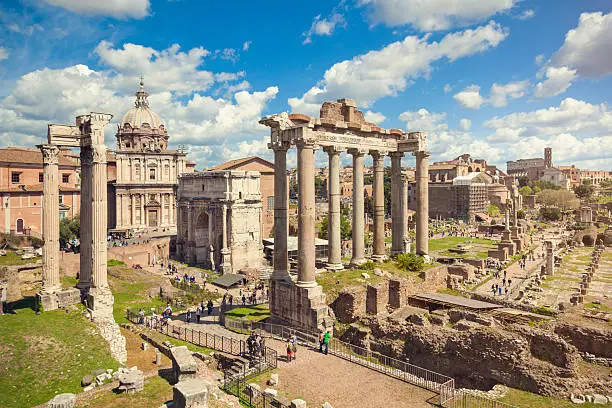
The Forum was founded in the 8th century B.C. and was gradually expanded over the centuries. It was a place of great political and religious importance, and it was also a commercial center. Fires and earthquakes damaged the Forum over the centuries but it remained essential to Roman life until the 6th century A.D. Today, the Roman Forum is a popular tourist destination. The ruins of the Forum are still impressive, and they provide a glimpse into the grandeur of ancient Rome.
Conclusion:
Rome, the Eternal City, stands as a timeless testament to the richness of Western civilization and the heart of Christianity. Its history and culture span millennia, and its attractions are like an open-air museum. From the iconic Colosseum to the majestic Pantheon, Rome’s wonders captivate visitors with their grandeur and historical significance. Trajan’s Column, the Circus Maximus, and the Baths of Caracalla add further layers to the city’s historical tapestry, while the Roman Forum preserves the spirit of ancient Rome.
The Arch of Constantine, with its blend of architectural styles, reflects the evolving landscape of the Roman Empire. These sites offer a glimpse into Rome’s glorious past and its enduring influence on art, architecture, and culture. Visiting these remarkable wonders is like stepping back in time and immersing oneself in the rich heritage of Rome.
FAQs – Rome: Exploring Ancient Wonders in a Journey Through Time
1. What is the Colosseum, and why is it famous?
The Colosseum is an ancient Rome theater known for being the largest ever built in the Roman Empire. It hosted gladiatorial contests, public spectacles, and executions, making it an iconic symbol of ancient Rome and a UNESCO World Heritage Site.
2. What is the historical significance of the Pantheon?
The Pantheon is a well-preserved temple in Rome, built in 27 B.C. It is dedicated to all deities and showcases Roman architectural excellence. Emperor Hadrian’s reconstruction in 118-125 A.D. and later consecration by Pope Boniface IV add to its historical significance.
3. Why does Rome have a pyramid, the Pyramid of Cestius?
The Pyramid of Cestius, built around 12 B.C., was a tomb for a wealthy Roman. Its unique design reflects Rome’s fascination with Egyptian culture during that era.
4. What is the Arch of Constantine, and why is it important?
The Arch of Constantine is a triumphal arch commemorating Emperor Constantine’s triumph and victory. It incorporates sculptures and reliefs from earlier monuments, reflecting the transition from paganism to Christianity in the Roman Empire.
5. What is Trajan’s Column, and what does it depict?
Trajan’s Column is a triumphal column commemorating Emperor Trajan’s victory in the Dacian Wars. Its spiral bas-relief, 230 feet long, chronologically depicts events from the wars.
6. What was the Circus Maximus, and why is it historically significant?
The Circus Maximus was the largest chariot-racing stadium in ancient Rome, accommodating over 150,000 spectators. It played a crucial role in Roman entertainment and social life.
